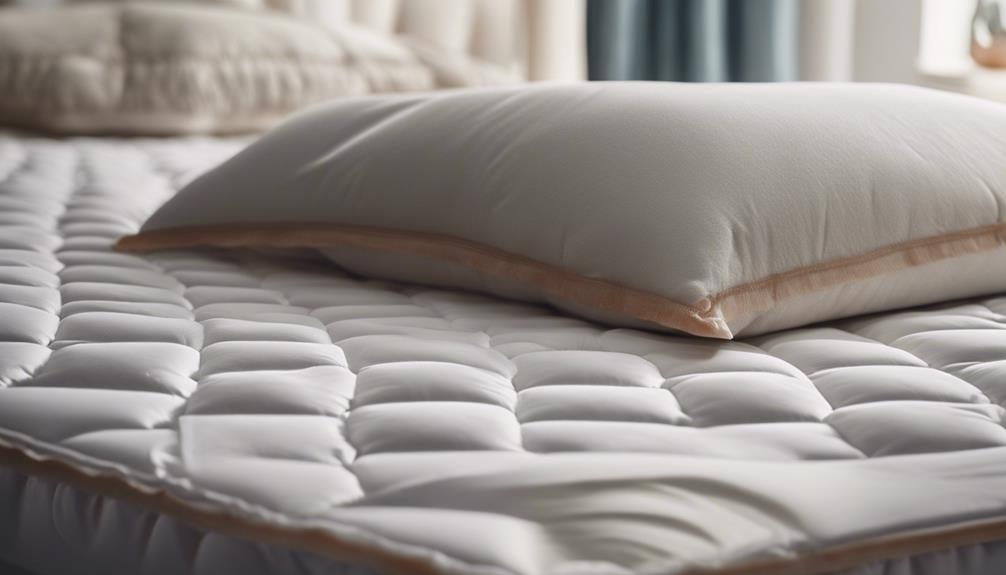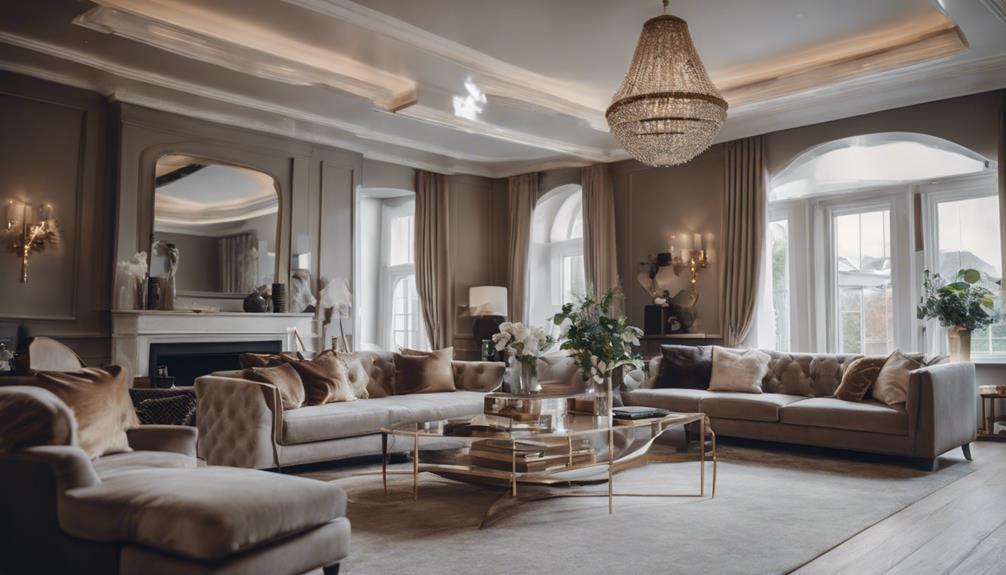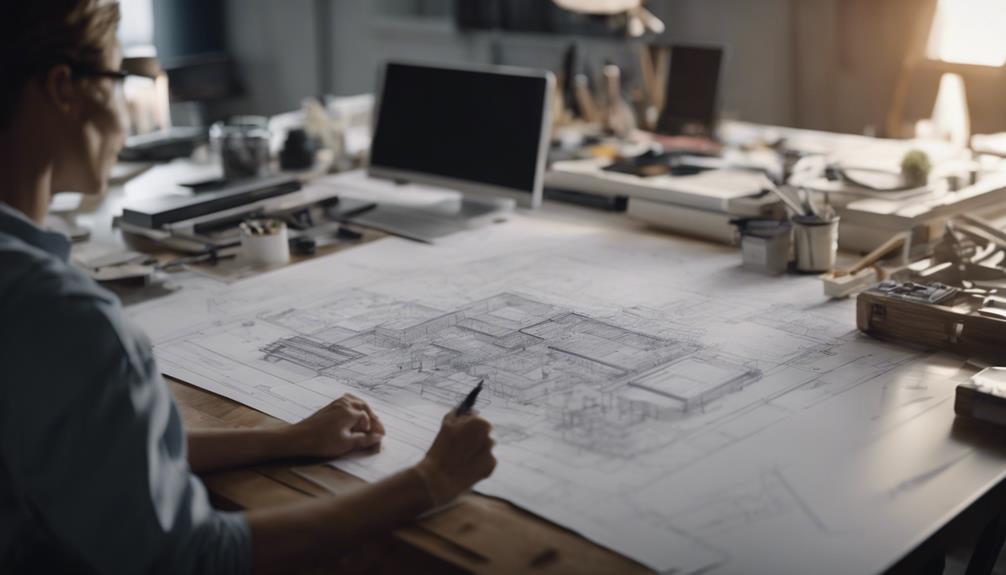Standard interior doors are typically about 80 inches tall and vary in width from 24 to 36 inches, with a thickness of around 1 3/8 inches. These door sizes comply with residential codes and fit snugly into most door frames. The door jamb, which frames the door, is usually 4 9/16 inches wide by 6 9/16 inches tall. When preparing the rough opening for the door frame, remember to make it 2 inches wider and taller than the door size for installation ease. Oversized interior doors can reach heights of 84 to 96 inches, providing a touch of luxury and grandeur to any space.
Key Takeaways
- Standard interior doors are typically 80 inches tall.
- Widths range from 24 to 36 inches.
- Compliance with International Residential Code ensures uniformity.
- Door frames are 80 inches tall by 36 inches wide.
- Door jambs are typically 4 9/16 inches wide by 6 9/16 inches tall.
Standard Interior Door Dimensions
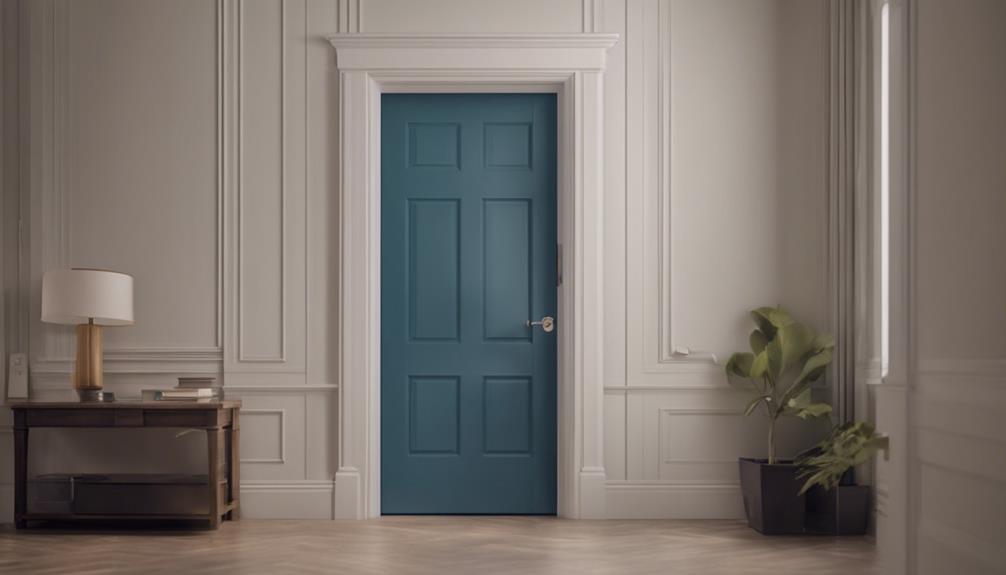
When selecting a standard interior door size, keep in mind that they're typically 80 inches tall and come in widths ranging from 24 to 36 inches. The standard thickness for these doors is 1 3/8 inches. This standard sizing guarantees that interior doors fit seamlessly into most residential buildings, meeting the requirements set by the International Residential Code.
Standard interior doors, with a height of 80 inches, are designed to accommodate the majority of door frames found in homes. The range of widths from 24 to 36 inches offers versatility in fitting different openings while maintaining a cohesive look throughout the house. The standard thickness of 1 3/8 inches strikes a balance between sturdiness and weight, making these doors easy to handle and install.
Whether you're renovating or building a new home, knowing the standard dimensions of interior doors can help you plan effectively and ensure a smooth installation process. These measurements provide a solid foundation for selecting the right doors that will enhance both the functionality and aesthetics of your living space.
Height and Width of Interior Doors
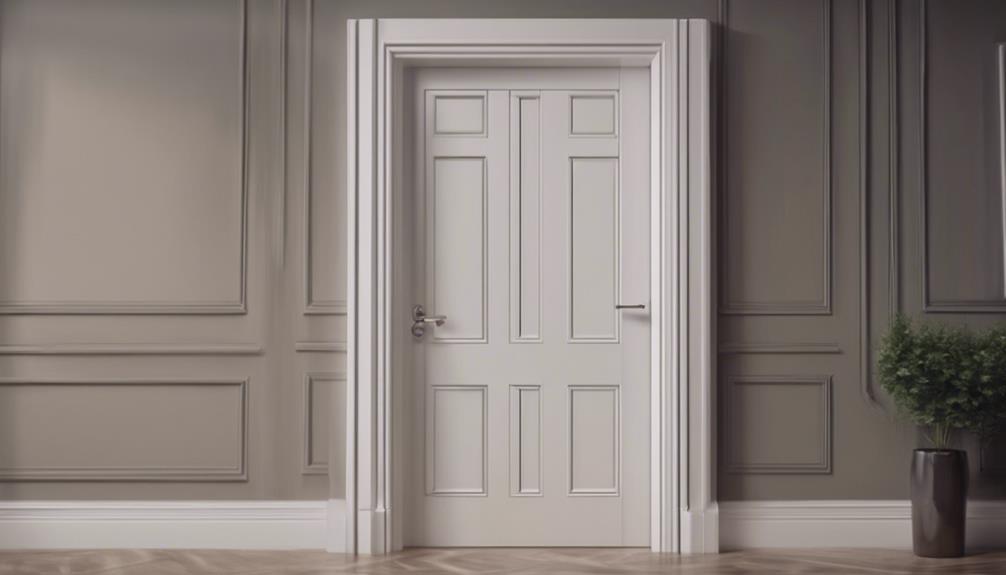
When considering the standard dimensions for interior doors, it's important to understand the typical height and width specifications commonly found in residential buildings. Standard interior doors are usually 80 inches tall, making sure they provide adequate clearance for most individuals. The widths of these doors can vary, with common measurements falling between 24 to 36 inches wide. This range allows for flexibility in design and functionality, accommodating different needs within a home.
The 1 3/8-inch thickness of interior doors strikes a balance between sturdiness and practicality, fitting well within most door frames. Keep in mind that the minimum height for passage doors is set at 80 inches to comply with regulations and ensure accessibility. Additionally, the International Residential Code may specify particular height and width requirements for interior doors to meet safety standards and building codes. Understanding these standard dimensions will help you choose the right interior doors for your home, making sure they fit properly and function effectively.
Typical Door Jamb Size
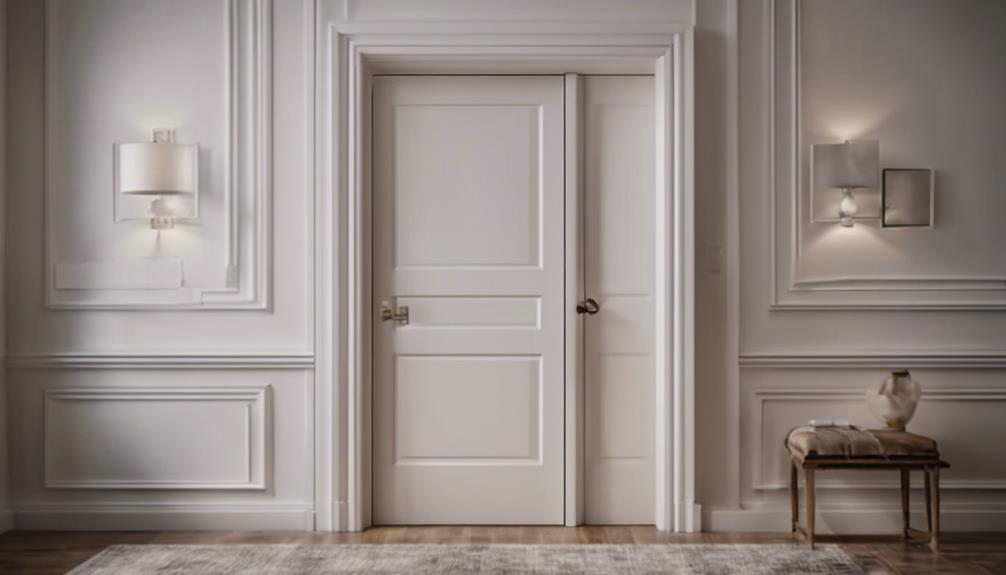
When it comes to the typical door jamb size, it's important to take into account the door frame dimensions, standard door width, and jamb material options. Understanding these aspects will help you select the right door for your space and guarantee a proper fit.
The door jamb provides the framework for your door installation, so knowing its size is crucial for a successful project.
Door Frame Dimensions
To ensure a proper fit for a standard interior door installation, understanding the typical door jamb size, which is 4 9/16 inches wide by 6 9/16 inches tall, is essential. When it comes to door frames for standard interior doors, the typical size needed is 80 inches tall by 36 inches wide, with a rough opening requirement of approximately 82 inches tall by 38 inches wide. Making sure your door frame dimensions align with these standards is vital for a successful installation. Below is a table summarizing these door frame dimensions:
| Aspect | Measurement |
|---|---|
| Door Jamb Width | 4 9/16 inches |
| Door Jamb Height | 6 9/16 inches |
| Frame Height (Standard) | 80 inches |
| Frame Width (Standard) | 36 inches |
Standard Door Width
If you want to guarantee that your standard interior door fits correctly, understanding the typical door jamb size is key, with door widths ranging from 28 to 32 inches.
Here are some important facts about standard door width and interior doors:
- Most interior doors have a width ranging from 28 to 32 inches.
- Door jambs for interior doors are typically 4 9/16 inches wide by 6 9/16 inches tall.
- Taller interior doors are considered oversized and may have custom dimensions.
- The rough opening for a standard interior door is usually 82 inches by 38 inches.
Knowing these standard sizing details will help you choose the right interior door for your space.
Jamb Material Options
For essential door frame stability and support, selecting the right jamb material is vital. You can choose from various options like wood, composite, PVC, or aluminum for your door jamb. The typical door jamb size is 4 9/16 inches wide by 6 9/16 inches tall.
These jamb materials play a pivotal role as structural components that support the door frame, influencing its overall strength and stability. Proper installation of the door jamb is key to guarantee your door functions correctly. Whether you opt for the traditional warmth of wood or the durability of aluminum, the jamb material you select will impact the longevity and performance of your door frame.
Consider your preferences and the specific needs of your space when choosing the right door jamb material.
Rough Opening for Door Frame
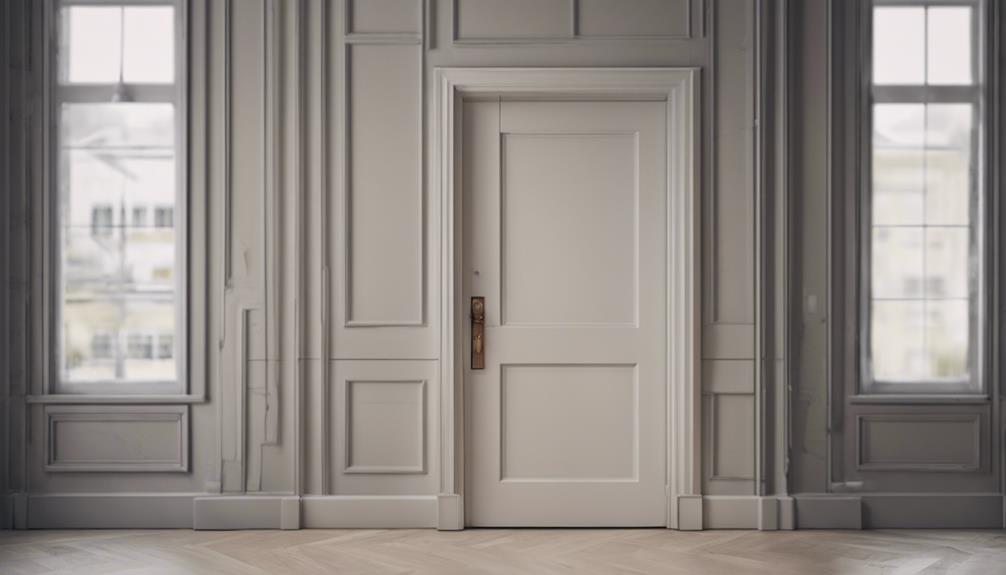
When framing a standard interior door, make sure the rough opening is 2 inches wider and 2 inches taller than the door size. This guarantees a proper fit and allows for adjustments during installation.
Here are some key points to keep in mind:
- Provide Adequate Space: The extra 2 inches in width and height around the actual door size create room for adjustments and shimming, making installation easier.
- Prevent Issues: Proper measurements for the interior door rough opening help prevent alignment problems and ensure the door fits correctly within the frame.
- Ensure Stability: A well-sized rough opening contributes to the stability of the door frame, preventing it from shifting or becoming misaligned over time.
- Facilitate Installation: Having the correct rough opening dimensions simplifies the installation process, leading to a smoother and more efficient door hanging experience.
Oversized Interior Doors
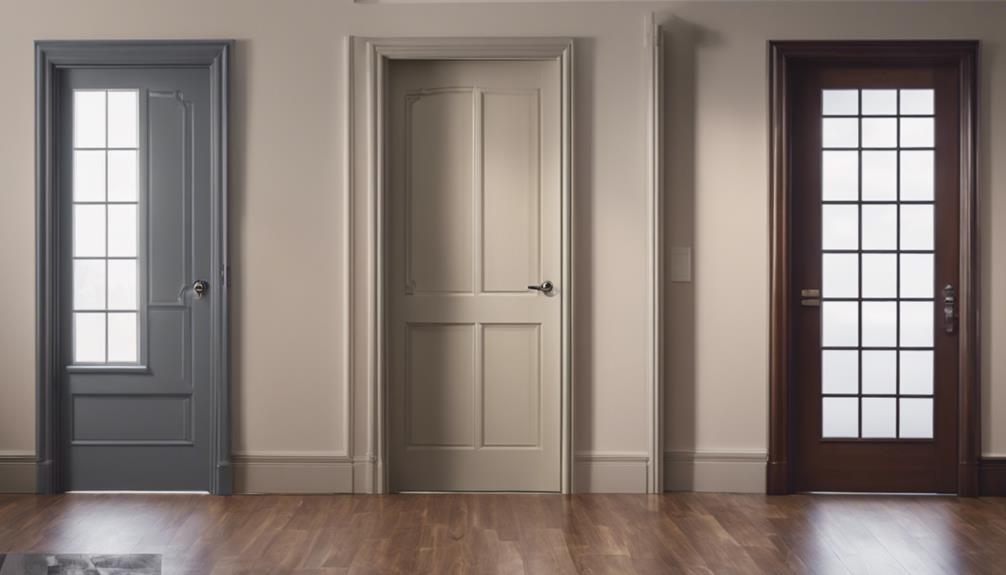
Exploring oversized interior doors brings a touch of grandeur to your living space, extending beyond the conventional height and width standards. These doors typically surpass the standard 80-inch height, ranging from 84 to 96 inches to cater to higher ceilings, creating a more open and spacious feel. In addition to height, the width of oversized interior doors can exceed the standard 36 inches, offering a grand entrance to your rooms. Custom sizes for these doors provide a unique opportunity to address special framing considerations for a proper and secure fit, allowing you to tailor the design to fit larger spaces perfectly and add a personalized touch to your home decor.
When considering oversized interior doors, it's important to note that their installation may necessitate special framing considerations to ensure a proper and secure fit. By opting for these larger doors, you can make a bold statement in your home while enhancing the overall aesthetic appeal. Whether you seek to create a grand entrance or add a touch of luxury to your interiors, oversized interior doors can be a stunning choice for your living space.
Common Interior Door Widths
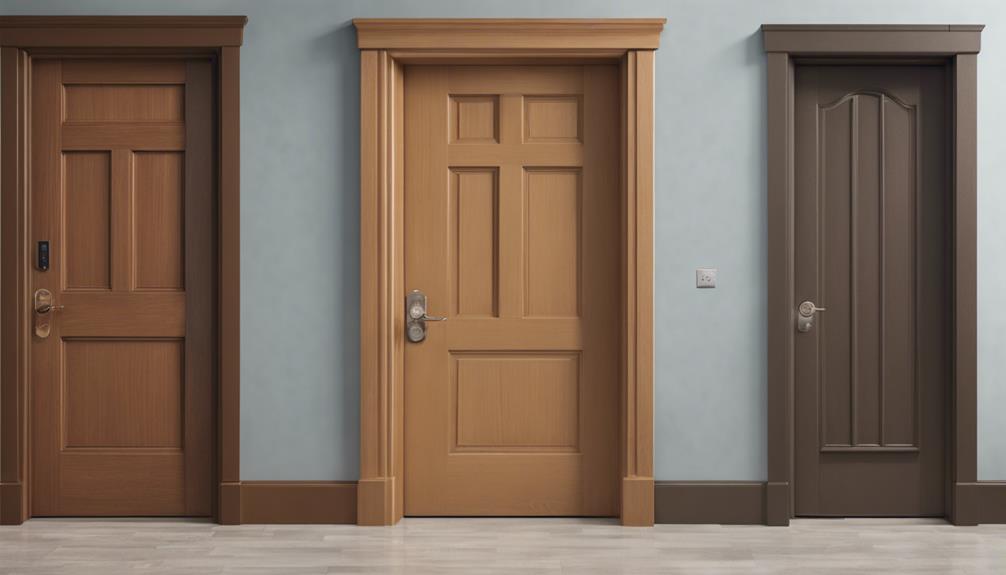
Ranging from 24 to 36 inches, common interior door widths provide a variety of options for standard door sizes in residential spaces. Here are some key points to keep in mind when examining interior door widths:
- Standard Widths: The most common interior door widths you'll encounter are 28, 30, 32, and 36 inches. These sizes are widely used in many homes and offer a good balance between functionality and space efficiency.
- Custom Interior Door Sizes: If you have specific requirements or unique spaces, custom interior door sizes can be tailored to fit your needs. From narrower doors for closets to wider ones for grand entrances, customization allows for a perfect fit in any situation.
- Accessibility: Bear in mind that the minimum width requirement for disability access is typically 36 inches. Making sure that your interior doors meet accessibility standards is important for creating an inclusive living environment.
- Regulations: The International Residential Code sets standards for minimum width requirements for interior doors to guarantee safety and accessibility in residential buildings. Always check local regulations to confirm compliance with these standards.
Frequently Asked Questions
What Are Standard Interior Door Sizes?
Standard interior door sizes typically range from 24 to 36 inches wide and 80 inches tall. Common widths are 28, 30, 32, and 36 inches. Doors are usually 1 3/8 inches thick, or 1 3/4 inches for taller ones.
The minimum height for passage doors is 80 inches, but codes may allow for 78-inch doors. These doors are essential for dividing rooms and come in various sizes to fit different spaces in your home.
Are Most Doors 32 or 36 Inches?
Most interior doors in homes measure either 32 or 36 inches wide. This choice often depends on available space and personal preference.
In older homes, 32-inch doors are more common, while newer constructions often feature 36-inch doors. Despite the width difference, both sizes typically have a standard height of 80 inches.
The decision between 32 and 36-inch doors ultimately comes down to both design aesthetics and practicality in your living space.
What Is the Rough Opening for an Interior Door?
When planning for an interior door, remember that the rough opening, which is slightly larger than the door itself, is key.
For a standard 36-inch door, aim for a rough opening around 38 inches wide and 82 inches tall. These extra inches provide space for the door frame and allow for adjustments during installation.
Ensuring your rough opening is just right will result in a smooth and proper fit for your interior door.
How Wide to Frame a 36 Inch Door?
When framing a 36-inch door, make sure the rough opening width is 38 inches. This extra space accommodates the door frame and shimming for installation.
A 36-inch door needs a 2-inch wider opening to fit correctly. Proper dimensions are important for secure fitting and functionality.
Consider the door swing and clearance requirements when framing. Remember, a little extra space goes a long way in making sure your door fits smoothly and operates perfectly.
Conclusion
So, when it comes to standard interior doors, size does matter! Remember, the typical dimensions for interior doors are around 80 inches tall and 28-32 inches wide.
But don't worry, there's always room for flexibility with oversized options available. As they say, when one door closes, another one opens – make sure it's the right size for your space!

